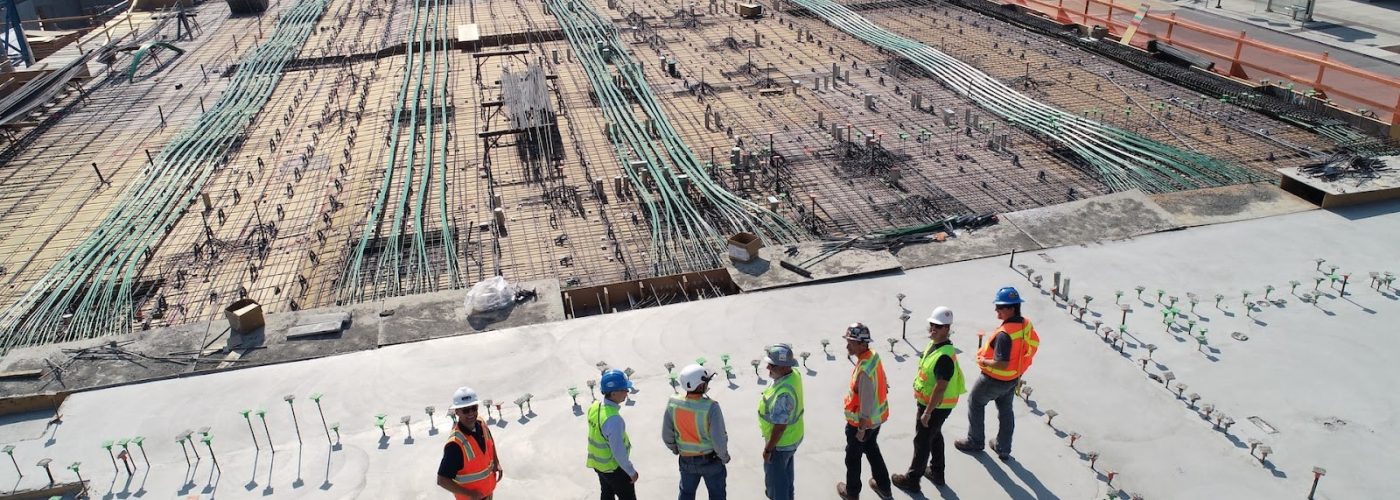Construction workers are constantly at risk of developing lung-based illnesses from chemicals and contact-based alignments from toxic substances. Workers can prevent the detrimental effects of inhaling or touching hazardous chemicals via training and quality equipment.
10 Hazardous Substances Found on Construction Sites
If you were injured from the following toxic chemicals and substances, contact an occupational hazard attorney in your local area. They can help you get the compensation you deserve.
1. Asbestos
Asbestos is often used as insulation or fire retardant in older construction sites and buildings. It can cause respiratory issues if airborne particles are inhaled. Workers should wear disposable coveralls, rubber boots, eyewear, gloves, and respirators when around asbestos.
2. Benzene
Common in industrial sites, benzene is a dangerous chemical used in the production of plastic, rubber, or solvents. Inhaling the particles can lead to skin, eye, and respiratory irritation. In cases of prolonged exposure, benzene can cause blood cancers and damage to the nervous system.
3. Lead Paint
Lead poisoning poses a serious risk, especially to children and pregnant women. It can be found in old paint and construction materials in older buildings. While the US banned lead paint in 1978, it’s still found in nearly 29 million housing units, posing a significant health risk.
4. Liquid Freon
Freon is used in air conditioning and refrigeration, typically in the form of pressurized gas. It can be very dangerous if inhaled, as it cuts off oxygen to the skin and cells. Since freon is a tasteless, odorless gas, construction workers may not know that they’re being exposed to it,
5. Acid and Bases
Strong acids and bases, such as sulfuric acid, hydrochloric acid, and lye, are often used in the construction and renovation of buildings. Contact with skin or inhalation of vapors can be very harmful. The severity of your symptoms will depend on what acid or base you’re exposed to.
6. Gaseous Mercury
This heavy metal is a frequent occurrence in old construction sites and can cause neurological problems if inhaled. Mercury is so dangerous that it can trigger kidney, liver, and heart deterioration, cancers, and pulmonary fibrosis. Permanent respiratory disability is also very common.
7. Silicon Dioxide (Silica)
Silica is a common mineral found in concrete and mortar and causes silicosis and respiratory illness if inhaled. Crystalline silica is a common construction-related disease that results from inhaling silica dust. Eventually, this dust causes inflammation, scarring, and permanent damage.
8. Insect Pesticides
These chemicals, used in the extermination or control of pests, can cause a range of illnesses if inhaled or ingested. While a worker may not be exposed to pesticides directly (as in, they won’t be present when pesticides are being administered), pesticide residue can still cause damage.
9. Chemical Solvents
Solvents such as paint thinners, acetone, and more can be hazardous if inhaled in large doses. If a worker is experiencing stomach pain, headaches, dizziness, nausea, loss of coordination, or irritation, they’ve been overexposed to solvents. They must be removed from the site right away.
10. Toxic Dust
Dust is the most common hazard on a construction site and can contain nearly every chemical or substance mentioned on this list. Dust can aggravate asthma symptoms when particles are inhaled and can also cause skin irritations. Drywall and wood are common sources of dust.
In Conclusion…
Staying safe on a job site is paramount, so it is important to be aware of these hazardous substances and ensure that proper safety protocols are in place and being followed. All of these chemicals could cause serious, irreversible damage if workplace safety isn’t taken seriously.
Building, Design & Construction Magazine | The Choice of Industry Professionals





